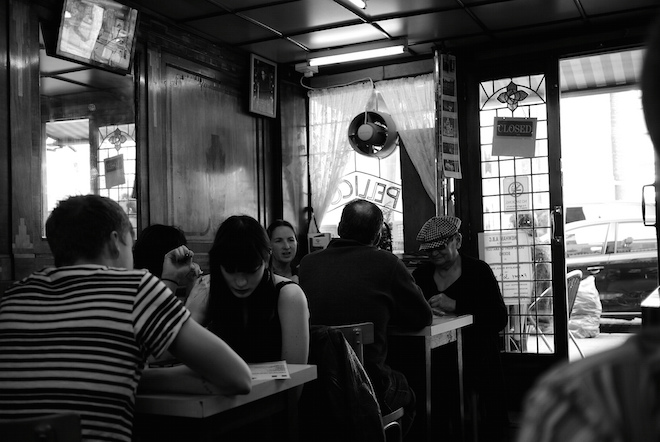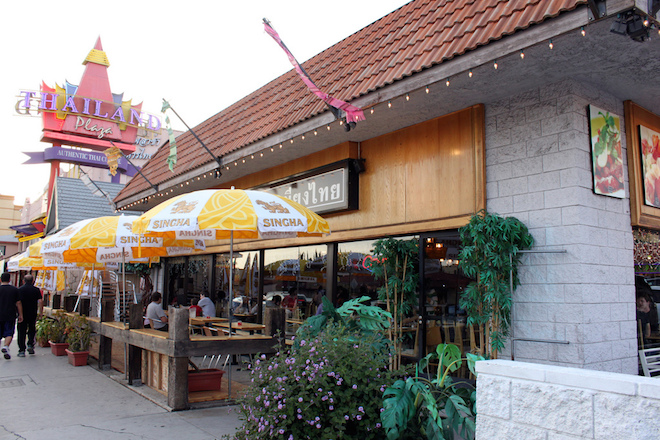Restaurant SEO: How to Tweak the Names and Descriptions of Your Menu Items

Is your website optimized for SEO?
You want to attract new restaurant customers and stay top-of-mind with your existing clientele. One of the best ways to do this is with your restaurant’s online website menu and your menu item names and descriptions.
For example, when hungry, potential customers are searching for, and craving, filet mignon, you want to make sure you come up on page one of the search results. The names and descriptions you choose for your menu items can be enticing and descriptive for your customers, and the search engines.
Delight the customer with tantalizing, searchable terms to create a picture of your menu items. Match the name and description with keywords, and your menu can help drive your search engine optimization.
Let’s set the table for your restaurant SEO and discuss how you can tweak the names and descriptions of your menu items to increase your search engine rankings.
Defining SEO
SEO stands for Search Engine Optimization. SEO is the process by which you optimize your website so you get a better ranking in search engine searches like Google, Bing or Yahoo. Most people use search engines every day to research, find an address, buy a product, or find a place to eat.
According to searchenginewatch.com, the top listing in Google’s organic search results receives 33% of the traffic compared to 18% for the second position. The same study found that 92% of all web traffic came from page one of an average search. If you are on page two, the traffic drops off by 95%, and the odds of people finding you and clicking through to your website are slim.
How do you end up on page one of the search results for your menu items?
The first and most important step in restaurant SEO is paying attention to the words on your page and optimizing the names and descriptions of your menu items. Find the keywords and phrases that must be included in your website’s menu area.
Use Google’s Keyword Planner
Choosing the right keywords for your menu items and description isn’t always an easy task. While creative, unique names for your menu items are fun, they can make it difficult for your customers, and search engines, to find you.
It’s important to use the language your customers will use when searching for you online. You’ll want to find the words that your customers are “Googling.”
To use the free Google Keyword Planner, sign up for a Google AdWords account. Even if you don’t use AdWords, you’ll find the Keyword Planner quite helpful in your SEO toolbox.
Once in the Keyword Planner, you can search for your individual menu items to discover popular names and search terms. Follow these steps to tweak the names of your menu items to increase your SEO:
- Enter a menu item – for example, enter filet mignon
- Enter your landing page – this could be the page where you list and describe filet mignon
- Enter your product category – Restaurants. A drop down menu will pull up, and you can choose your restaurant type.
- Choose and edit your targeting.
- Pick your date range – choose a certain period of time for average monthly searches.
- Pick your keyword options.
- You can also enter terms in the “include and exclude” box. For example, perhaps you want to exclude all references to sandwiches.
- Click “get ideas,” and you’ll see a list of possible menu item names. Our search pulled up many choices: mignon roast, oven-roasted filet mignon, filet mignon roast marinade, mignon steak, etc. Use these keywords as you are choosing names and writing descriptions for your menu items.
Once you’ve defined your keywords and your menu item name, use these same keywords as you write your menu description. This validates your keywords and lets the search engines know you value them, and they are important.
Use Your Menu Item Name in the Title Tag
You’ve picked your keywords, and you’ve given your menu item a great, searchable name. Make sure you go back into your website and edit the Meta Title Tag (Page Title). The page title is displayed on the tab at the top of your browser and is a visual reminder of your page content.
Your website visitors will notice the page title. If your menu item on this page is Oven Roasted Filet Mignon, make sure your page title uses the same words. The title tag should clearly describe the content of the page and must include your chosen keywords. Here’s a good page title formula:
- Use your keywords – use the main keyword and a second one if there is space.
- Use the name of the restaurant.
- Keep it under 55 characters, and you can expect at least 95% of your titles to display properly. (Characters are letters and spaces.)
- Put the most important words in your title at the front.
- If you are curious how your title tag will look in Google, try this title tag emulator.
So, for your page on filet mignon, the title might look like this:
Oven Roasted Filet Mignon | Joe’s Restaurant or
Best Oven Roasted Filet Mignon | Joe’s Restaurant
Page titles are one of the most important SEO tools you can use on your website. (tweet this) Titles show up in three vital places – browser windows, search engine results pages and external websites such as social media.

Restaurant SEO can bring in new customers to your restaurant.
Describe Your On-Page Menu Items
Your on-page online menu item names and descriptions introduce the customer to your restaurant. They should complement the ambiance of your restaurant. You can improve menu item descriptions with “menu engineering.” Combine and coordinate this with your Google keyword planning, title tags and Meta descriptions to ensure your SEO success.
Compare these descriptions and their use of sensory language:
- Shrimp shipped from the ocean. vs. Succulent grilled shrimp shipped fresh from the Baja peninsula.
- Chicken salad with tomatoes and green Chile sauce vs. Southwestern chicken salad smothered in green Chile sauce laced with fresh, locally grown tomatoes.
- Steak and Potatoes vs. Legendary Grilled Kansas City Steak with organic potatoes straight from the chef’s backyard.
Elaborate on your chosen menu item name in the text description. Use flavorful words that create a picture for your website visitor. Answer the question, “What am I selling?” Use the description to make your website visitor hungry for your item.
Revisit the Meta Description
The Meta description is the short description that shows up under your title in search engine results. It contributes to your ultimate click-through rate. This is your chance to advertise your menu item and let customers know what your page is about. This description should entice a potential customer to read more about your Oven Roasted Filet Mignon.
Repeat words from your on-page description in your Meta description. (tweet this) Use your keywords about filet mignon while creating a compelling description that makes the restaurant searcher want to click through to your website and read more. Keep this copy around 155 characters.
An important thing to remember about Title Tags and Meta Descriptions is to make sure they are unique for each and every page.
Restaurants are some of the most-searched-for types of local businesses. Google and other search engines are looking for specific content and signals for search engines rankings. The number one type of content sought out on restaurant websites is the online menu. Fine-tune and tweak your menu item names and your menu item descriptions. Optimizing this portion of your website is a top priority to ensure your search engine optimization.
Do you want to create a website menu for your restaurant? Restaurant Engine can help! Contact us today to learn more about our complete restaurant website package.
Images: astonishme & Prayitino

Information on this site is helpful. I hope this site will have more progress.
SEO for site of restaurants, in them it helps to attract customers.
That’s great, good luck.